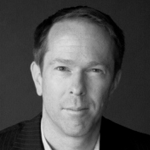
The Energy Industry is Changing: New Technology and Demand
North America’s energy landscape has changed dramatically in recent years, drawing private equity’s eye. Privcap brought together three experts to discuss technology’s role in the energy market’s evolution, why the North American opportunity is unique, and why there’s such a need for private capital.
David Snow, Privcap:
I’m thrilled that all of you have joined us to learn about private capital’s huge role in the new North American energy opportunity. Why don’t we start with a 1,000-foot view of the energy industry and private capital? Private equity has been on the rise as an asset class, and it’s been an important source of capital and expertise in the energy industry in North America. What is distinct about the current opportunity for private capital in energy compared to prior cycles?
Jordan Marye, Denham Capital:
Technology has become ubiquitous and unlocked two major aspects of our marketplace. We make more hydrocarbons today, and do that more efficiently. That effort has introduced a lot of supply into the marketplace, but it’s also caused a constraint in capital—particularly financial and human capital. We’re trying to find and develop opportunities to invest in this explosion of technology.
Anas Alhajji, NGP Energy Capital:
There are some remarkable opportunities relative to the past. We have improvement in technology, and increasing national and international demand for oil and gas. Add to that the favorable political climate in the U.S. when it comes to natural gas and the issue of energy independence. Then you add a diversity of supplies in a way we’ve never seen before, because technology unlocks three major plays: Northeast, North, and the far South. The stars are aligned.
Snow:
Jon, as someone who’s advised on many oil and gas transactions, what is remarkable about the current opportunity?
Jon McCarter, EY:
We’re looking at $25 billion of investment, but compared to the overall transaction flow, you’re only looking at 7 to 8 percent of the oil and gas activity. As we talk to our energy PE clients, despite more players on the scene, they can’t take advantage of all the opportunities in front of them.
Marye:
It’s an exciting time to be investing. The capital needs for our business have never been greater, and we have an evolving marketplace. We would urge carefulness and caution.
Snow:
I’d like to dig deeper into why all of you believe there’s such a capital need in the energy asset class. Is it simply that the technology required to unlock a lot of energy assets is expensive and requires a huge concentration of capital?
Alhajji:
The oil and gas industry is capital-intensive. Compared to other countries, the U.S. doesn’t have one oil company owned by the government. Saudi Aramco spent $25 billion to $40 billion a year and has only one board and one man on top. In the U.S., we’re talking about thousands of companies. Some of them are small, and there are many boards and people to make those decisions. Continuous technology advances create a need for more capital; high declining rates and the growing domestic and international demand for things like natural gas need more capital. We’ve seen new plays and movement to the core and low-cost areas. Any way you look at it, we need more capital.
When speaking to the operators of independent energy companies, are they aware of PE as a source of capital, expertise, and a broadening of the network?
McCarter:
They’re becoming more aware of it. This is an industry that has thrived on alternative sources of capital. As they achieve their capital needs, if anything you’re going to see them be more open. The other theme related to capital requirements is this market dislocation and lack of infrastructure providing momentary opportunity.
Alhajji:
The majors came late to the game—it was the independents and midsize companies that bought the shale and oil and gas resources. The majors paid a heavy price for coming in late and bought some areas that are not as lucrative. Only those who can keep up with change can reap the largest benefits from the resources that exist today. The majors, because of their size, are slow to react.
McCarter:
To summarize, private capital is in a better position to be nimble and have a different risk appetite, and that’s what we’re seeing as the shale revolution develops.
Snow:
We’re talking about the energy opportunity in North America, including Mexico, and that country recently had the beginning of reform for its energy sector. Can any of you comment on how interested you are in that opportunity, and how big a deal this is?
McCarter:
It’s one of the areas of most client interest. The corporate funds want to spend a lot of time talking about our thoughts and contacts with the government down there. We’ve been waiting for this opportunity for 10-plus years. It seems like it’s been inevitable, and there’s been a lot of movement in a short period of time.
Marye:
It’s a positive development, and we’re enthusiastic about Mexico making the reforms. I would characterize our point of view as cautious. We’ve seen behavior like this from other countries where the internal ability to create oil and gas revenues has lagged. There have been incentives put in place to motivate outside foreign investment. We would be extremely cautious at this time with respect to Mexico, but if there’s a demonstration of stability and thoughtfulness and policy over the years, we would look hard at the country.
Snow:
Why don’t we pick a play in the U.S. that we got a question about from someone in our audience: the Permian Basin in Texas and New Mexico. Given the amount of competition, are you still interested in that area, and how do you stay competitive and go after the targeted returns?
Marye:
The Permian Basin is an active place right now for large companies, for middle-size companies, for small, privately backed companies. Whenever we make an investment in a place as nuanced and localized as the Permian Basin or the eastern Midland Basin, we’re looking for a symmetry in opportunity and information. There’s still opportunity for folks who have the local access and knowledge to navigate the Permian Basin.
Snow:
Jon, do you agree about the Permian Basin?
McCarter:
I definitely do. At one point, you saw PE funds go to great lengths to avoid certain portfolio investments or have a little less in the same play. What I’ve seen with clients is an acknowledgement, as they grow their businesses, that they’re going to have cross-play activity, and the Permian is the example used the most. There is a lot of churn as it relates to opportunity there, and it’s one of the most prolific basins we’ve ever seen in the U.S.
Snow:
Do you see private capital growing as a percentage of the overall mergers and acquisitions taking place? What do you predict in five to 10 years’ time?
McCarter:
Well, if you look at the dry powder that’s lined up, we’re at an all-time high. It’s private capital, so it’s hard to know exactly what the dollars are, but my prediction is there’s more than $100 billion staring at the space. It remains an underserved market. You could easily see a doubling of the annual value going into the space.
Snow:
What are your views on the future of the energy space and the penetration of private capital?
Alhajji:
The pie is going to get larger, but the percentage will stay around what it is today. Between Canada and the United States, this year we’re spending about $200 billion. We still need more private capital.
Marye:
The sentiment is that at least the notional capital dollars coming into the marketplace will continue to increase. That’s the case on the upstream, midstream, and services side where PE has been a major participant.
McCarter:
Most of the energy PE money invested will be in North America. Our latest energy PE survey indicated a trend where folks thought increased activity was going to happen in places like Latin America, Asia Pac, Africa, and the Middle East. The are increased interests from certain funds to go a little more international.
